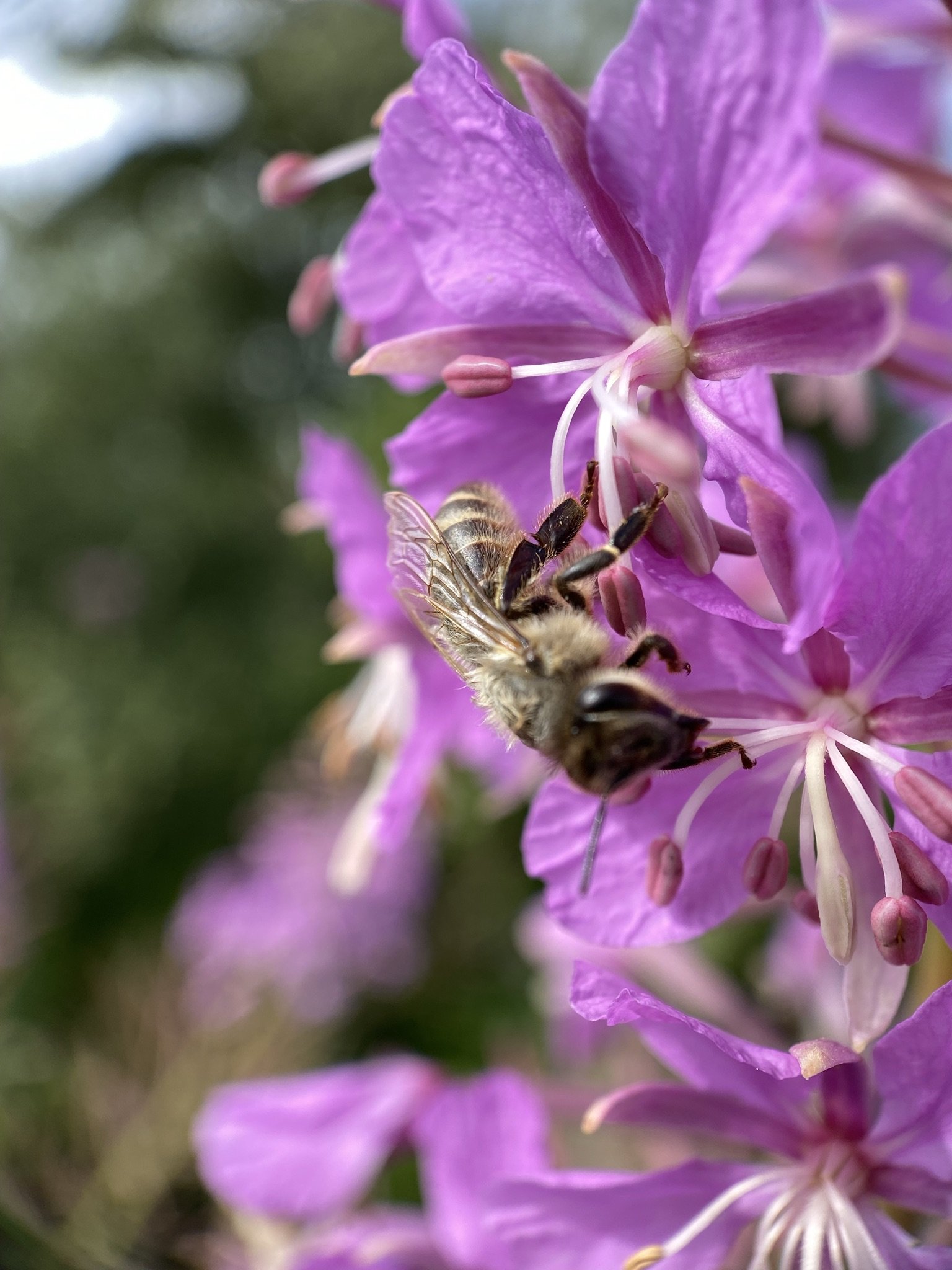Chamaenerion angustifolium, Fireweed
Artist: Sarah Red-Laird
Title: Bee Habitat in Cyanotype 18
Location: Feral Farm, Montana
Flower: Chamaenerion angustifolium, Fireweed
Bee: Apis mellifera, Honey bee; Bombus, Bumble bee; Osmia, Mason bee
Materials: Cyanotype, barnwood
Field Season: 2022
Composed: 2023
This flower was harvested from Becca Skinner’s permaculture farm in Gallatin Gateway, Montana. Though small, at just one acre, her farm is mighty. I was connected to Becca through the Women in Ranching community while I was on a road trip across the American West and Midwest, connecting with famers, ranchers, and conservationist and searching for opportunities for collaborative conservation projects.
I visited thousands of acres in the summer of 2022, and Becca’s was — without a doubt — the most productive and prolific. The amount of food that comes from her land is mind-boggling, and the beauty and bee habitat that she cultivates is next to none.
Through heatwaves and summer thunderstorms, her farm remained a refuge for not only myself and my heeler mix, Midgie, but a vast and diverse population of bees.
Learn more about Becca in this feature from Montana Woman Magazine, and visit her website here. Keep an eye on her Instagram for photos of her farm, and even possibly some upcoming permaculture workshops.
This plant has the highest range of native distribution that I know of! It’s been growing for eons in North America’s northern states and Canada’s territories from British Columbia east to Newfoundland, south to North Carolina, west to Tennessee, and northwest to Illinois, Iowa, and North Dakota. Southwest from California north to Washington. In the far north from Alaska to Nunavit.
AND THEN it spreads to Ireland, Scotland, Wales, England and into mainland Europe.
This plant hosts a plethora of bee species, and also has a plethora of names:
North America: Fireweed
Canada: Great Willowherb
Britain and Ireland: Rosebay Willowherb (in the United Kingdom it is also known as “bombweed,” as a result of its rapid appearance in bomb craters during the Blitz of World War II - this is a plant that LOVES disturbance)
Also known in some parts of Canada and Europe as Saint Anthony's Laurel

